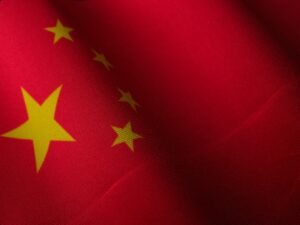Table of Contents
ToggleIntroduction
Feng Shui(风水fēng shuǐ), an ancient Chinese art, is much more than just a decorating idea. It has been a profound and complex part of Chinese culture for thousands of years. It is a tradition closely linked to Taoism and is based on the idea that the arrangement and orientation of space and objects can influence the flow of energy, or qi (气 qì), bringing about harmony, prosperity, and well-being. The ideas, methods, and history of feng shui will all be covered in this article.
A Historical Overview
Feng Shui’s origins trace back to ancient China, over 3000 years ago. Its early foundations are closely associated with the observation of celestial bodies. Ancient Chinese astronomers developed the ‘luo pan’ (罗盘 luó pán), a complex magnetic compass, to align buildings and other structures according to the directions of the stars and the earth’s magnetic field.
Taoist ideas, particularly the idea of Yin and Yang (阴阳 yīn yáng), were first included in Feng Shui during the Han Dynasty (206 BC–220 AD). The balance of these forces became a significant focus in Feng Shui since Yin and Yang stand for nature’s opposing and complementary elements.
The Principles of Feng Shui
Feng Shui operates on several fundamental principles: Qi, Yin-Yang, the Five Elements (五行 wǔ xíng), and the Bagua (八卦 bā guà).
Qi (气 qì)
At the heart of Feng Shui is the concept of Qi, the life-force energy that permeates the universe. In Feng Shui, it is believed that the arrangement of objects and spaces can influence the flow of Qi, with a harmonious flow bringing positive results and blocked or misdirected flow leading to adverse outcomes.
Yin-Yang (阴阳 yīn yáng)
The Yin-Yang theory describes how opposing forces in the universe are interconnected and interdependent. In Feng Shui, achieving the balance between Yin (dark, passive, receptive, and feminine) and Yang (light, active, giving, and masculine) is crucial for creating a harmonious and energizing space.
The Five Elements (五行wǔháng)
Feng Shui also incorporates the five elements – Wood (木 mù), Fire (火 huǒ), Earth (土 tǔ), Metal (金 jīn), and Water (水 shuǐ) – which are believed to interact with each other in productive and destructive cycles. Incorporating these elements into your space in a balanced manner is thought to foster a nourishing environment.
The Bagua (八卦bāguà)
The Bagua is a grid of nine sectors, each representing a different aspect of life (such as wealth, health, career, and relationships). The sectors also correspond to a specific direction, element, color, and living area. The Bagua map is used to analyze the energy of a space and make adjustments to promote positive Qi flow.

Practical Application of Feng Shui
Feng shui application evaluates the constructed and natural settings, taking into account the presence and placement of water and plants as well as the size, form, and direction of buildings. For instance, a Feng Shui-inspired design would place the front entrance, known as the “mouth of Qi,” in a desirable position. The front and back doors would not be directly aligned since this would be thought to allow Qi to go through the space too quickly.
Other techniques include arranging a workspace to face a specific direction to increase productivity or positioning a bed in a dominant position to foster a sense of security.
Conclusion
Feng Shui offers a holistic approach to living, intertwining the physical environment with our emotional and spiritual aspects. This ancient wisdom suggests that by mindfully arranging our surroundings, we can cultivate an environment that fosters positivity, balance, and prosperity. While it’s an age-old practice, Feng Shui resonates in our contemporary world, reflecting a universal desire for harmony and well-being.
Contact our head teacher Chen Huimin at info@lcchineseschool.com if you want to learn Chinese or have additional questions about our Chinese programs.
REGISTER for our SUMMER CAMP in 2023!
Learn about our Internship Program in China.
Learn about holidays in China in 2023.
Get free Chinese learning resources.
Read about the Spring Festival Celebration on NRK’s website: https://www.nrk.no/norge/harens-ar-1.16270652#top.







